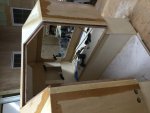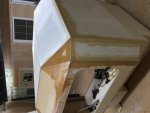CoyoteThistle
Adventurer
Wow, excellent progress! Looking great.
I'm hoping to avoid the usual outside the bed tie downs too. Seems the trick with ratchet straps or any internal tie down (especially in the front) is reaching it to tighten it down. If you have that part figured out, should work. I think Four Wheel Campers uses little hatches on the inside of the camper to reach the front tie downs. Not sure how others do it.
There's also endless debate out there on spring-loaded versus non-spring-loaded tie downs where the truck/bed may flex under certain conditions and stress the camper. Something else to think about...
I'm hoping to avoid the usual outside the bed tie downs too. Seems the trick with ratchet straps or any internal tie down (especially in the front) is reaching it to tighten it down. If you have that part figured out, should work. I think Four Wheel Campers uses little hatches on the inside of the camper to reach the front tie downs. Not sure how others do it.
There's also endless debate out there on spring-loaded versus non-spring-loaded tie downs where the truck/bed may flex under certain conditions and stress the camper. Something else to think about...



